If you’ve owned a parrot, cockatiel, guinea pig, or hamster, you know one thing: they chew on everything. Furniture? Fair game. Cables? A tasty treat. That wooden frame you thought was safe? Gone in a week.
That’s why wooden chew toys are lifesavers for pet owners. They keep our feathery and furry friends busy, protect our belongings, and support dental health.
I learned this the hard way when my cockatiel turned my bookshelf corner into his chew toy. Trust me, the right toy would have saved me a lot of sanding and repainting.
Let’s discuss the best wooden chew toys for birds and small pets. We’ll cover what makes them worth buying and how to choose ones your pet will actually use (because some toys just gather dust).
Why Wooden Chew Toys Matter
Natural Instincts
Birds and small pets are wired to chew. It’s not just about being destructive; it’s about survival instincts.
- Birds chew to keep their beaks trimmed and strong.
- Rodents and rabbits need to chew constantly because their teeth never stop growing.
- Chewing relieves boredom, prevents destructive behavior, and even reduces stress.
Ever noticed your bird turning into a tiny construction worker, dismantling anything they can find? That’s them saying, “Hey, I need a job.” Wooden toys give them that “job” in a safe, controlled way.
Health Benefits
Chewing isn’t just entertainment. It’s health care.
- Prevents overgrown beaks and teeth that can cause eating problems.
- Supports jaw and beak strength, which is crucial for natural behaviors.
- Encourages exercise when toys double as climbing or shredding fun.
So yes, a simple wooden block isn’t just a block. It’s your pet’s toothbrush, gym, and puzzle all rolled into one.
What to Look for in Wooden Chew Toys
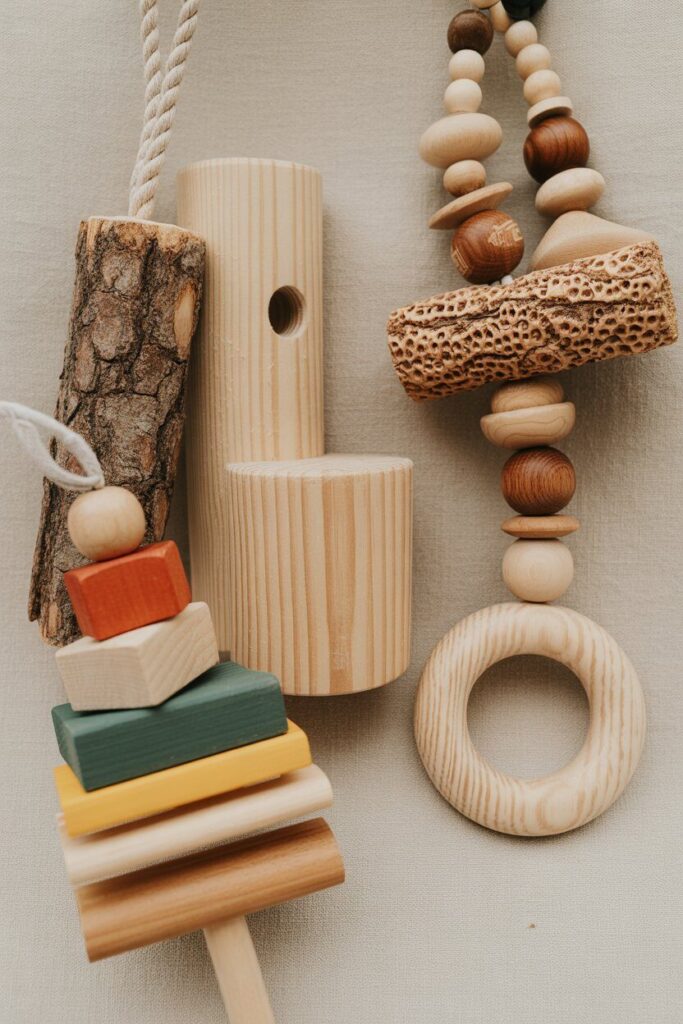
Not all wooden toys are created equal. Some are great, others are just firewood with a label. Here’s what to check before adding anything to your cart.
Safe Wood Types
This is huge. Not every wood is safe for chewing. Stick with:
- Apple, pear, willow, or balsa for birds.
- Pine and aspen for rodents and rabbits (make sure it’s untreated).
Avoid anything treated with chemicals, paint, or varnish. If it smells weird or looks too shiny, skip it.
Size Matters
Pick toys that match your pet’s size. A giant macaw won’t care about tiny beads, while a hamster won’t touch a block bigger than itself.
- Small birds (parakeets, cockatiels): lightweight, colorful blocks.
- Large parrots (African greys, macaws): heavy-duty hardwoods.
- Rabbits and guinea pigs: medium-sized logs or tunnels.
- Hamsters and gerbils: small sticks or compact chew shapes.
Extra Features
Let’s face it, plain wood can get boring fast. Look for toys with:
- Colors and shapes for variety.
- Ropes, bells, or beads for interactive fun.
- Hanging designs that double as climbing challenges.
Your pet wants entertainment, not just a stick.
Best Wooden Chew Toys for Birds
Birds, especially parrots, can be picky. Some days they’re obsessed with a toy, other days they act like it doesn’t exist. But these options usually get a thumbs-up (or should I say, a wing-flap of approval).
Hanging Wooden Block Toys
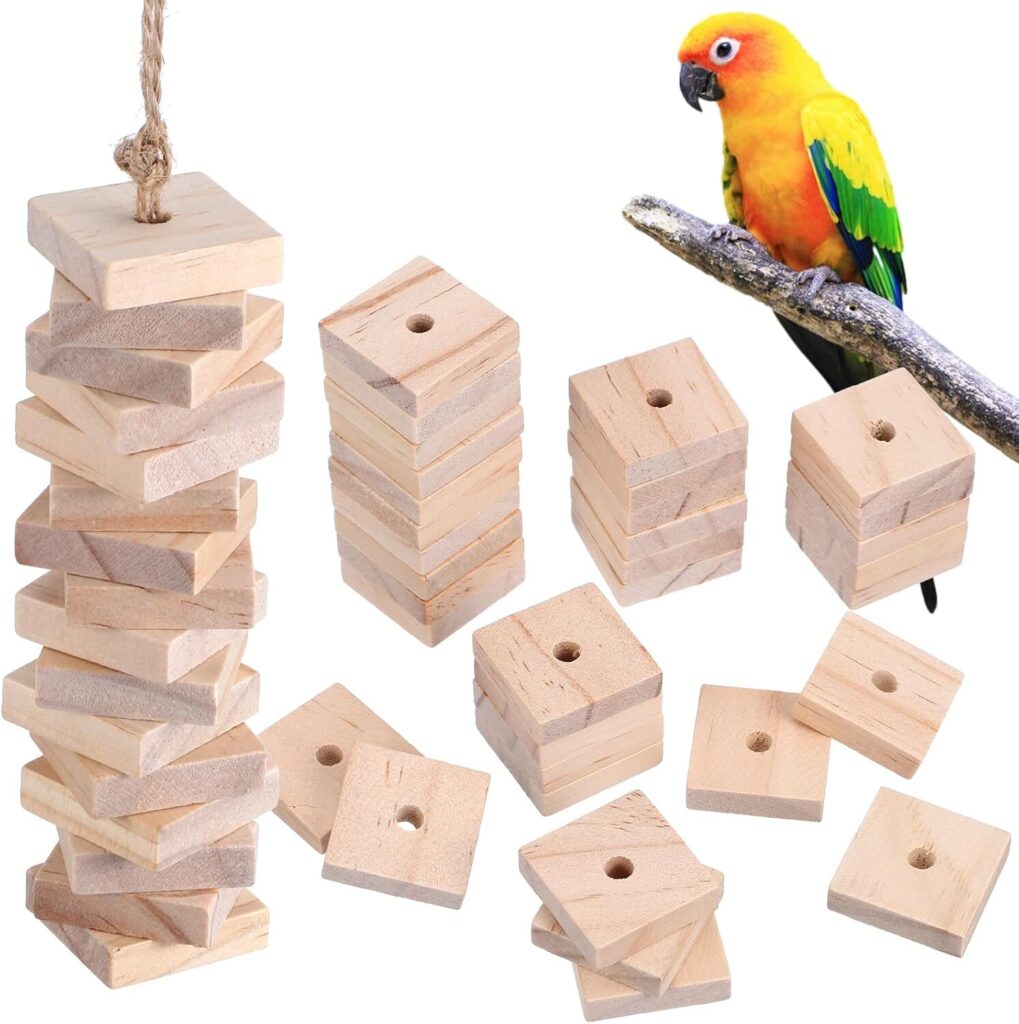
These are classics for a reason. They combine wood with ropes, chains, and sometimes bells. Birds can chew, climb, and swing all in one go.
- Great for parrots and cockatiels.
- Keeps them busy for hours.
- Adds a little “jungle gym” to their cage.
Balsa Wood Toys

Lightweight and soft, balsa wood is perfect for smaller birds who can’t handle hardwoods. My cockatiel goes absolutely nuts for these because they’re easy to shred.
- Perfect for budgies and lovebirds.
- Cheap and replaceable (you’ll need replacements, trust me).
- Shredding helps burn energy.
Natural Wood Perches
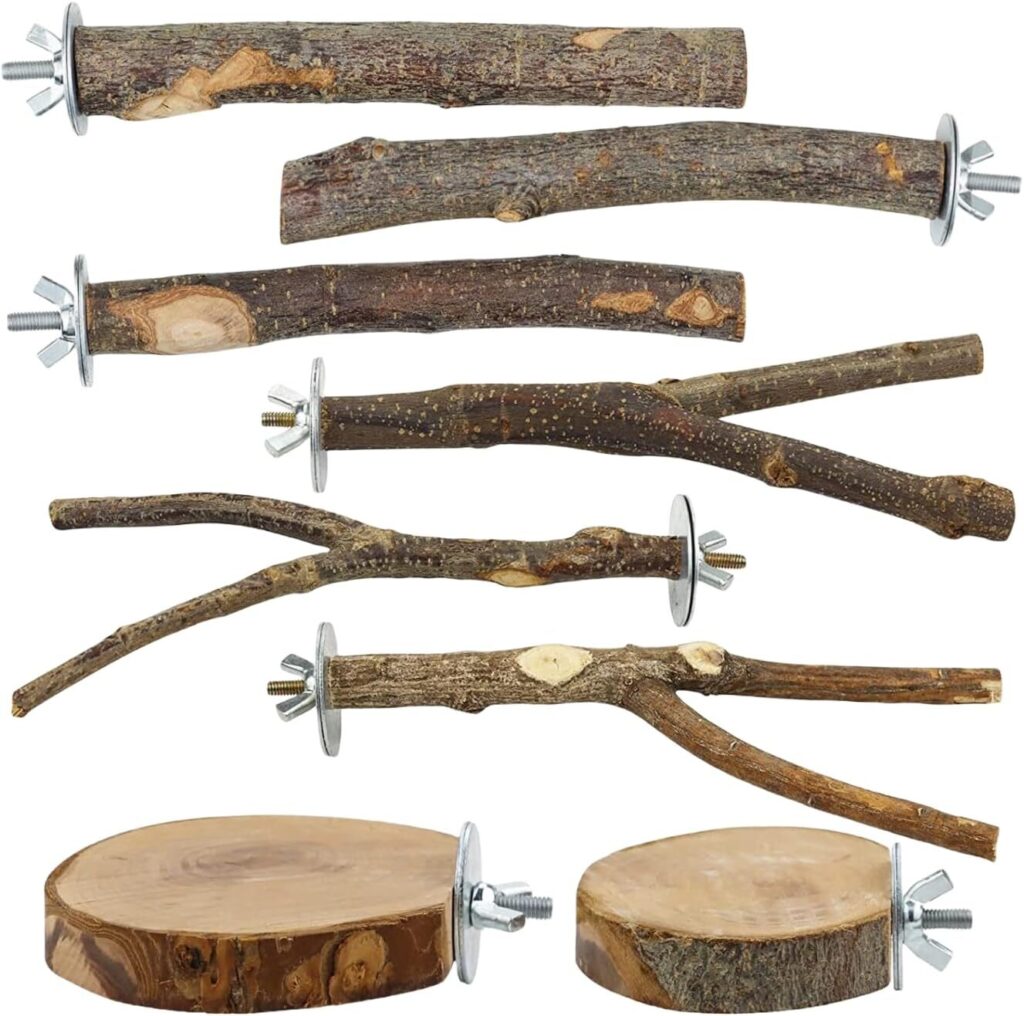
Perches aren’t just for standing. Birds chew on them constantly. A natural wood perch doubles as both a resting spot and a chewable.
- Keeps beaks trimmed naturally.
- Adds a natural feel to the cage.
- Different textures keep it interesting.
Best Wooden Chew Toys for Small Pets
When it comes to rodents and rabbits, the toy aisle can feel overwhelming. But wooden options are hands-down the most useful.
Wooden Blocks and Sticks
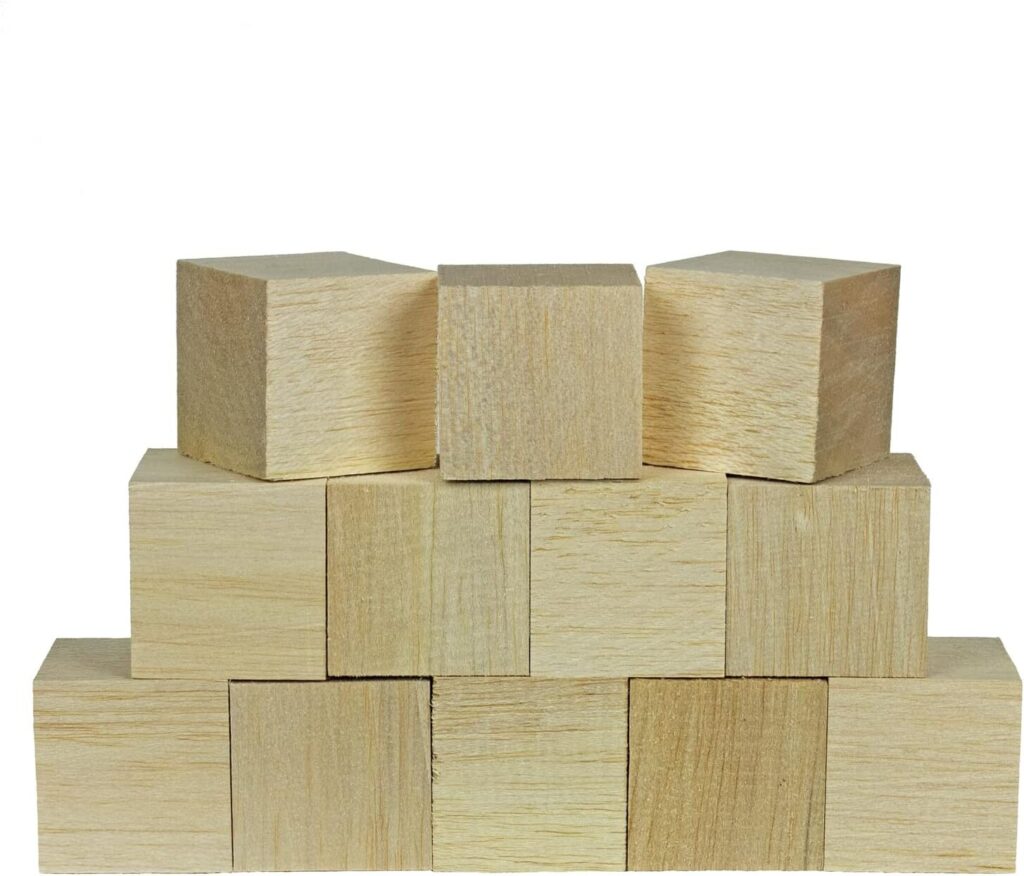
The simplest, most effective chew toys. Rabbits and guinea pigs love gnawing on sticks like applewood or willow.
- Affordable and safe.
- Available in bulk packs.
- Great for everyday chewing needs.
Wooden Hideouts and Tunnels
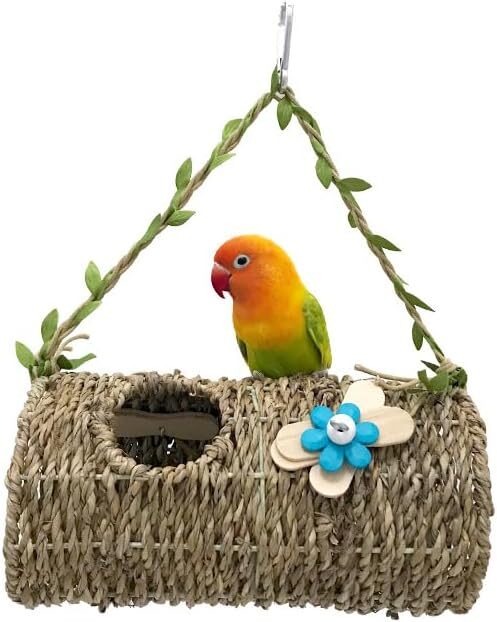
Here’s where function meets fun. Hideouts made of untreated wood double as chewable “homes.”
- Rabbits love chewing their way into new doorways.
- Hamsters and gerbils use them as nesting spots.
- Encourages exploration while trimming teeth.
Wooden Hanging Toys
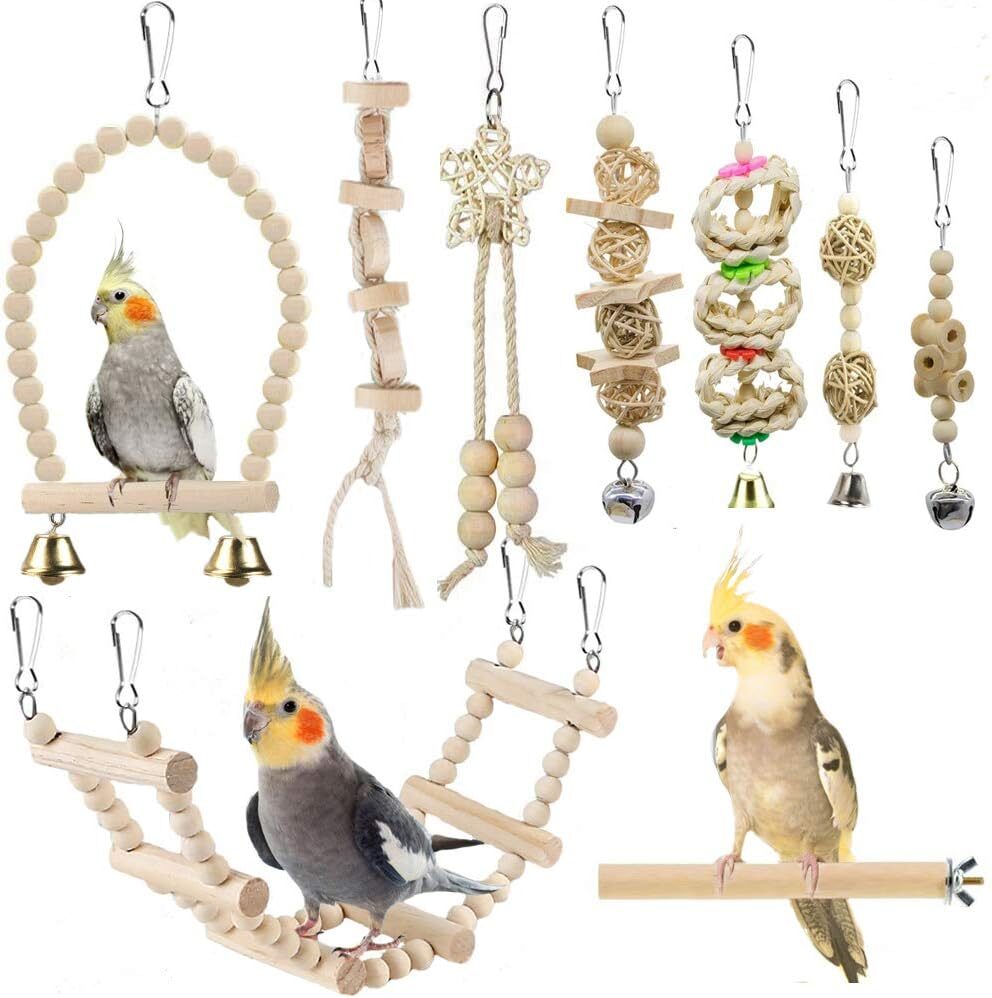
Yes, even small pets love a bit of hanging action. Wooden toys that dangle in cages keep hamsters and rats entertained.
- Prevents boredom in cages.
- Encourages climbing and exercise.
- Doubles as a chew toy.
DIY Wooden Chew Toy Ideas
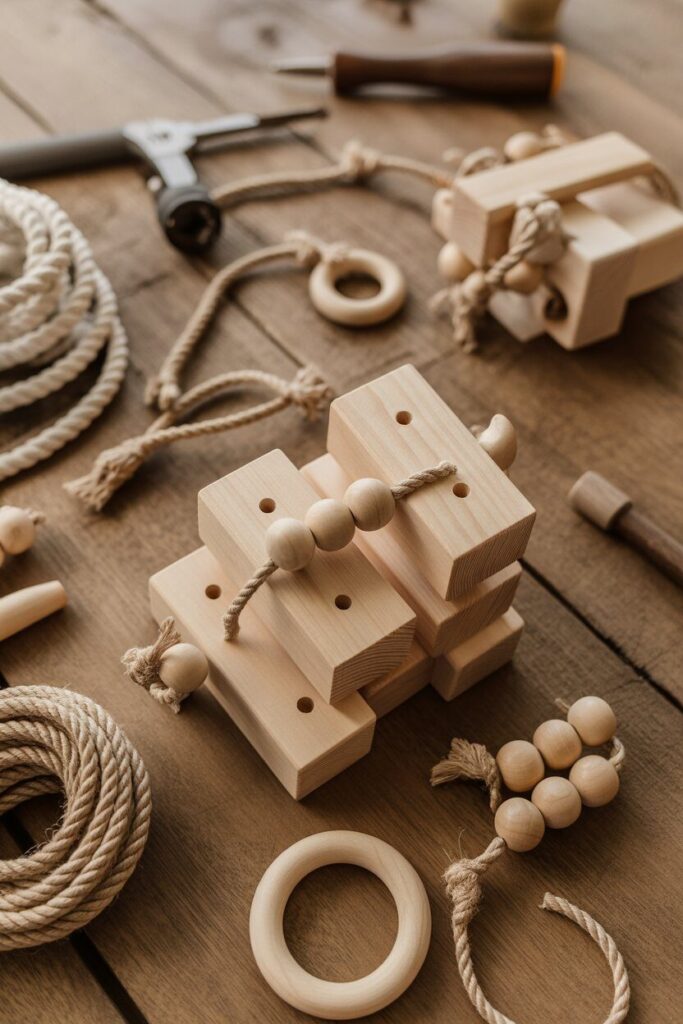
Want to save money or just enjoy a little DIY project? Making your own wooden toys is easier than you think.
- Collect safe branches like apple or willow.
- Cut them into small pieces.
- Bake them in the oven at low heat to kill bacteria.
You can also string small blocks together with untreated rope. Your pet won’t care if it looks fancy; they just want to chew it to pieces.
And honestly, making toys gives you the fun of saying, “See this? I made it for you,” while your pet immediately destroys it. Talk about appreciation.
How to Introduce Wooden Toys to Your Pet
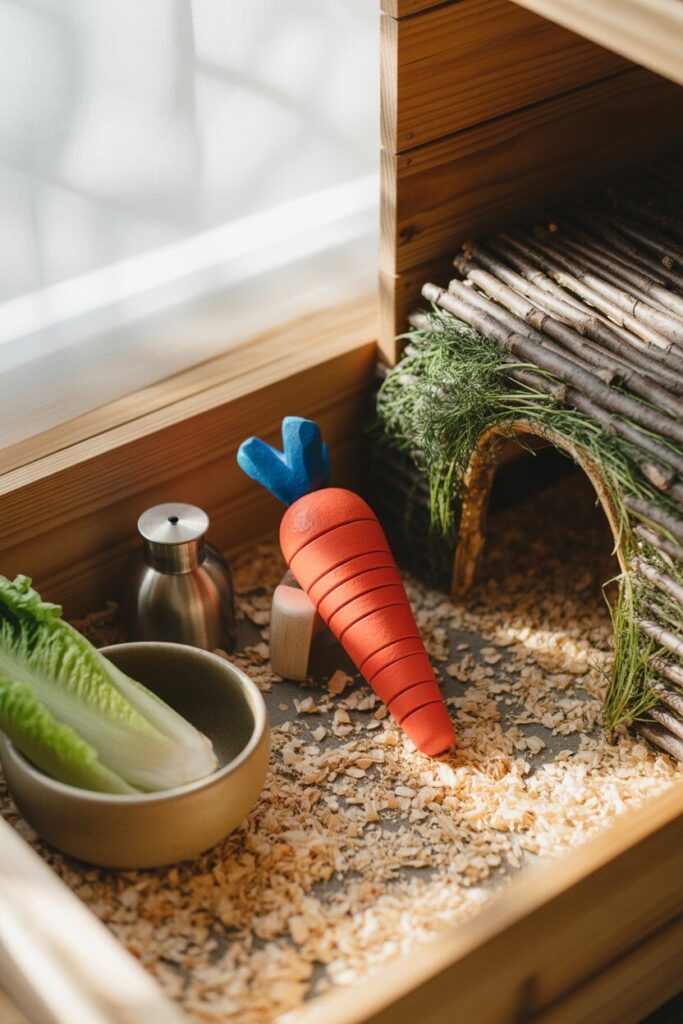
Not every pet takes to a toy right away. Sometimes they act suspicious, as if you just dropped a UFO in their cage.
Start Small
Introduce a toy near their favorite spot, like a perch or food bowl. Let them get used to seeing it before expecting them to chew.
Mix It Up
Rotate toys every couple of weeks. Pets get bored fast. A toy that was ignored last week might suddenly become their favorite.
Reward Interaction
When your bird or rabbit checks out the new toy, reward them with a treat. Positive reinforcement works wonders.
My Top Picks (Based on Real Experience)
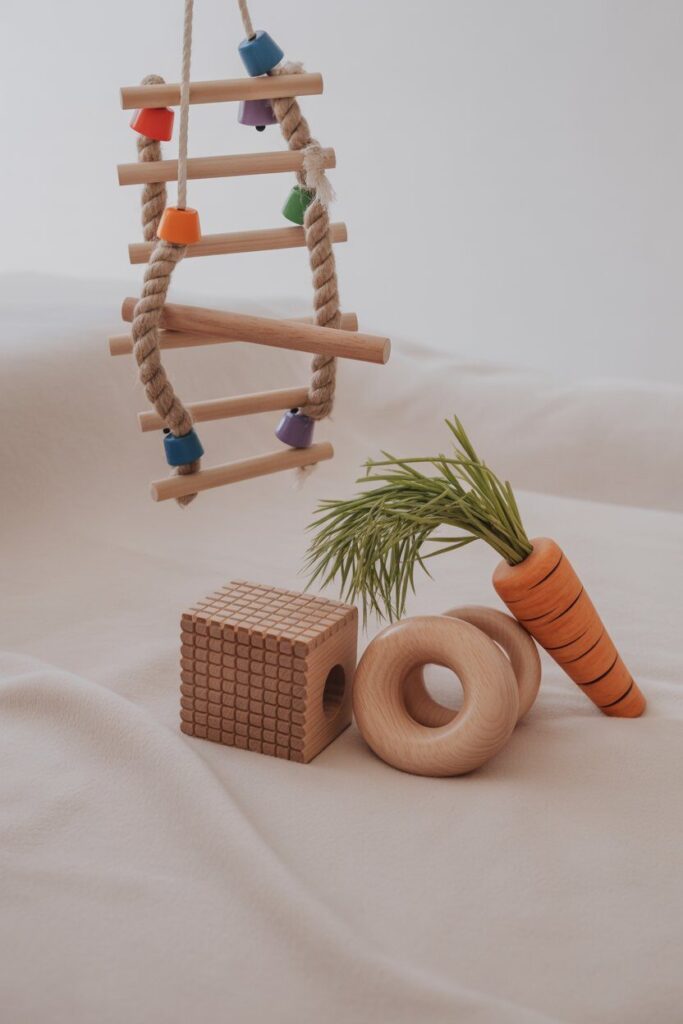
Alright, enough theory. Let me share what’s actually worked in my own home.
- For birds: A hanging block toy with colorful shapes always wins. My cockatiel can spend hours turning it into sawdust.
- For guinea pigs: Willow sticks are unbeatable. They’re cheap, safe, and always chewed down to nubs.
- For hamsters: Small wooden hideouts are gold. They gnaw, sleep, and play in them nonstop.
I’ve bought plenty of duds too (looking at you, overpriced toy that my pets ignored completely). So, IMO, the best toys are the ones that balance safety, affordability, and fun.
Common Mistakes to Avoid
Let’s quickly cover what not to do.
- Buying treated or painted wood: Dangerous and toxic.
- Getting the wrong size: A toy too big or too small won’t get used.
- Leaving old toys forever: Worn-out toys can splinter and cause injuries.
Keep it simple, safe, and fresh. That’s the golden rule.
Conclusion
So, what’s the bottom line here? Wooden chew toys aren’t just cute cage accessories. They’re essential for health, entertainment, and sanity—both yours and your pet’s.
From colorful hanging blocks for birds to natural wooden tunnels for guinea pigs, the right toy can make all the difference.
If you’re new to this, start with safe basics like applewood sticks or balsa blocks. If you’ve been at it for a while, experiment with interactive designs to keep things exciting.
And hey, if your pet still prefers chewing on your furniture after all this, don’t say I didn’t warn you. At least now you know where to look for the right distractions.
Are Wooden Chew Toys Safe for Birds and Small Pets?
Yes, wooden chew toys are safe if you choose untreated and pet-safe wood types. Birds enjoy apple, balsa, or willow.
Rabbits, guinea pigs, and rodents can safely chew pine, aspen, or applewood sticks. Avoid chemically treated, varnished, or painted wood, as these can be toxic.
Safety also depends on size and durability. A toy that is too big may not be used. One that splinters easily could cause injuries. If unsure, choose toys labeled for pets, or make DIY options from safe, natural branches.
How Do Wooden Chew Toys Help With Health?
Wooden chew toys do more than just fight boredom. For birds, chewing keeps their beaks trimmed. This is important for eating and preening.
Without chew toys, beaks can overgrow, leading to serious health issues. Rodents and rabbits also need chew toys since their teeth grow continuously. These toys help file their teeth naturally.
Wooden toys also boost mental stimulation. Chewing reduces stress and stops bad habits like cage biting or feather plucking. In short, chew toys are essential for health and a great way to beat boredom.
What Types of Wood Are Best for Chew Toys?
The best woods for chew toys are natural, untreated, and pet-safe. For birds, softer woods like balsa, apple, and willow are great because they shred easily.
Larger parrots may prefer hardwoods for a tougher challenge. For rabbits and guinea pigs, applewood sticks, willow, and untreated pine are top choices.
Always avoid cedar, redwood, and treated lumber. These contain harmful oils or chemicals. When shopping, look for toys that state the type of wood used.
If you’re making toys yourself, double-check that the wood species is safe for your pet.
How Do I Get My Pet to Use a Wooden Chew Toy?
Sometimes pets ignore new toys because they’re unfamiliar. The trick is to introduce the toy gradually. Place it near their favorite perch, hideout, or food area.
This way, they will naturally encounter it. Birds often take a few days to warm up to a toy. Rodents may need to sniff it before they decide to chew.
Rotating toys is also a game changer. Pets get bored with the same toy. Switching them out every couple of weeks keeps things exciting.
If your pet still seems uninterested, try adding variety. Choose toys with different colors, textures, or features like ropes and bells.
Can I Make DIY Wooden Chew Toys at Home?
Sure! Many pet owners enjoy making their own toys. You only need safe wood, like apple or willow. Use a saw to cut it into pieces, then bake them in the oven to kill bacteria.
You can also drill holes in the wood and string blocks onto untreated rope for hanging bird toys.
DIY toys are cost-effective and customizable. However, research safe wood species before giving them to your pet.
Avoid using backyard branches unless you are sure the tree is safe and pesticide-free. When done right, DIY wooden toys can be just as fun and healthy as store-bought ones.
